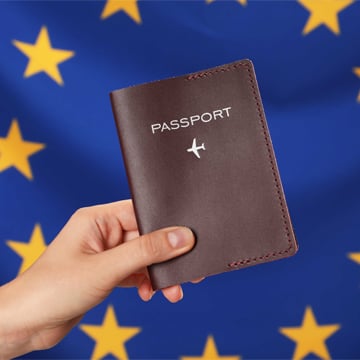The European Travel Information and Authorisation System (ETIAS) is set to reshape how visitors enter Europe. It is designed to improve security while still keeping travel simple and efficient. By adding quick digital checks before departure, ETIAS aims to protect borders and reduce delays, so you can travel with more confidence, starting in 2026.
What is ETIAS and Its Purpose?
What is the European Travel Information and Authorisation System (ETIAS)?
 The European Travel Information and Authorisation System (ETIAS) is a new digital travel system that the European Union plans to launch in late 2026. This ETIAS launch date is important for travelers to know, as the system will apply to citizens from visa-exempt countries who want to visit the 30 Schengen Area countries or Cyprus for short stays of up to 90 days within 180 days. You do not need to visit an embassy or provide biometric data, because the authorization is electronic and linked directly to your passport. Once your ETIAS travel authorization is approved, it will be valid for three years or until your passport expires, whichever comes first. This system is part of the EU’s plan to modernise border policies and strengthen control over who enters.
The European Travel Information and Authorisation System (ETIAS) is a new digital travel system that the European Union plans to launch in late 2026. This ETIAS launch date is important for travelers to know, as the system will apply to citizens from visa-exempt countries who want to visit the 30 Schengen Area countries or Cyprus for short stays of up to 90 days within 180 days. You do not need to visit an embassy or provide biometric data, because the authorization is electronic and linked directly to your passport. Once your ETIAS travel authorization is approved, it will be valid for three years or until your passport expires, whichever comes first. This system is part of the EU’s plan to modernise border policies and strengthen control over who enters.
The main purpose of ETIAS is to improve security while also making travel more efficient. Before you travel, you’ll need to complete the ETIAS application form, which allows the system to check your information against EU security, migration, and health databases. This helps identify people who may pose risks, such as those connected to terrorism, organised crime, or public health threats, before they reach the border. Submitting an ETIAS application in advance ensures that border guards can spend more time focusing on higher-risk cases instead of processing every traveller the same way. As a result, ETIAS reduces long lines and delays at entry points.
Differences Between ETIAS (EU) and ESTA (U.S.)
You can better understand ETIAS by comparing it to the U.S. Electronic System for Travel Authorization (ESTA). Both programs serve the same goal of screening visa-exempt travellers before they depart, but there are important differences:
| Feature | ETIAS (EU) | ESTA (U.S.) |
| Launch | Late 2026 | 2009 |
| Validity | 3 years or until passport expiry | 2 years or until passport expiry |
| Fee | €7 per application | US$21 per application |
| Target Countries | 59 visa-exempt countries (Schengen + Cyprus) | 40 Visa Waiver Program countries |
| Pre-Departure Checks | Screening against EU security, migration, and health databases | Screening against U.S. security and criminal databases |
| Decision Time | Minutes to days (if manual review is needed) | Usually minutes |
| Entry Guarantee | No guarantee—border guards decide at entry | No guarantee—CBP officers decide at entry |
ETIAS Timeline & Rollout
When will ETIAS be launched and become mandatory?
 ETIAS is expected to become fully operational in the last quarter of 2026, about six months after the Entry/Exit System (EES) is completed in April of that year. Many travellers are asking, “What is ETIAS authorization?”, it is a mandatory digital travel requirement for citizens from visa-exempt countries. At first, there will be a transitional period of at least six months, so you can still enter without ETIAS as long as you meet other travel conditions. After this stage, another six-month grace period will follow, and only first-time arrivals since that time will be allowed to enter without authorisation. Once both periods pass, every traveller from countries that don’t need a visa to enter must hold a valid ETIAS, or entry will be refused. If you are wondering how long is ETIAS valid for, the authorization lasts three years or until your passport expires, whichever comes first. This gradual timeline gives you time to prepare and adjust before rules are strictly enforced.
ETIAS is expected to become fully operational in the last quarter of 2026, about six months after the Entry/Exit System (EES) is completed in April of that year. Many travellers are asking, “What is ETIAS authorization?”, it is a mandatory digital travel requirement for citizens from visa-exempt countries. At first, there will be a transitional period of at least six months, so you can still enter without ETIAS as long as you meet other travel conditions. After this stage, another six-month grace period will follow, and only first-time arrivals since that time will be allowed to enter without authorisation. Once both periods pass, every traveller from countries that don’t need a visa to enter must hold a valid ETIAS, or entry will be refused. If you are wondering how long is ETIAS valid for, the authorization lasts three years or until your passport expires, whichever comes first. This gradual timeline gives you time to prepare and adjust before rules are strictly enforced.
ETIAS appeal process
The EU will roll out ETIAS in a phased way across all 30 Schengen EU countries and Cyprus. Airlines, cruise lines, and other carriers will be required to check ETIAS at boarding, and border systems will be updated step by step. Most applications are approved quickly, but the ETIAS approval time can take longer if a manual review is needed. At the same time, the EU will run a strong information campaign through websites, a mobile app, consulates, and travel companies, so you know how and when to apply. The purpose of ETIAS system is to strengthen border security while keeping travel smooth, ensuring both safety and efficiency for travellers like you.
Who Must Apply for ETIAS?
ETIAS requirements for non-EU citizens
 You must apply for ETIAS if you are from a visa-exempt country and plan to visit any of the 29 Schengen states or Cyprus for up to 90 days within a 180-day period. Some travellers do not need ETIAS, so it is important to check your case. For example:
You must apply for ETIAS if you are from a visa-exempt country and plan to visit any of the 29 Schengen states or Cyprus for up to 90 days within a 180-day period. Some travellers do not need ETIAS, so it is important to check your case. For example:
- EU and EFTA citizens (including Andorra, Monaco, San Marino, and Vatican City)
- Travellers with valid Schengen visas, residence permits, or local border-traffic permits
- Refugee or stateless travel-document holders issued by an EU/Schengen state
- Diplomatic or service passport holders and airline or ship crew members
- Passengers only transiting through airports
- Dual nationals travelling with an EU/Schengen passport
Which countries' citizens must apply for ETIAS before travel?
The system is designed mainly for passport holders from visa-free countries, and that includes many of the places you may know well. Eligible travellers come from countries such as:
- Albania
- Australia
- Brazil
- Canada
- Japan
- New Zealand
- Republic of Korea
- United Kingdom
- United States
- And more than 50 other nations
If you are interested in moving to Spain, check out our blog “The Essential Spanish Visa Guide” for more information.
How to Apply for ETIAS?
 Applying for ETIAS is a simple digital process that you can complete before travel, making it much easier than applying for a traditional visa to Europe. You fill out an online form through the ETIAS portal or mobile app and pay a €7 fee, which is waived if you are under 18 or over 70. The system then checks your data against EU security, migration, and health databases, functioning as an EU travel authorization rather than a standard visa. Most approvals arrive within minutes, but some visa applications may take longer if a manual review is required. To apply for Europe visa alternatives like ETIAS, you will need to provide personal details such as name, date of birth, passport information, contact details, and travel plans. You also answer security and limited health questions.
Applying for ETIAS is a simple digital process that you can complete before travel, making it much easier than applying for a traditional visa to Europe. You fill out an online form through the ETIAS portal or mobile app and pay a €7 fee, which is waived if you are under 18 or over 70. The system then checks your data against EU security, migration, and health databases, functioning as an EU travel authorization rather than a standard visa. Most approvals arrive within minutes, but some visa applications may take longer if a manual review is required. To apply for Europe visa alternatives like ETIAS, you will need to provide personal details such as name, date of birth, passport information, contact details, and travel plans. You also answer security and limited health questions.
How Does ETIAS Differ From a Traditional Visa?
The table below, ETIAS vs Schengen visa, highlights the main differences:
| Feature | ETIAS (EU) | Schengen Visa |
| Application Venue | Online via ETIAS portal or app | Consular appointment required |
| Decision Time | Minutes in most cases, up to 30 days for review | Several weeks, depending on the consulate |
| Validity | 3 years or until passport expiry | Varies; typically short stays with multiple entries |
| Cost & Complexity | €7 (free for under 18 or over 70) | €35–80 plus documents for the purpose, funds, and stay |
This shows you that ETIAS is faster, easier, and more affordable than applying for a visa, but it still allows the EU to keep borders secure.
How ETIAS Revenue Supports EU Travel Security and Tourism
 The ETIAS application online form charges a €7 application fee for travellers aged 18 to 70 from visa-exempt countries, and each approval lasts for three years or until the passport expires. This small ETIAS cost and application fee is expected to generate over €200 million each year for the EU. Most of that money will go toward covering the cost of developing, operating, and updating the digital system itself. There are also discussions in the EU about possibly raising the fee in the future, maybe to €20, so the revenue can support inflation adjustments, debt repayment, or new upgrades.
The ETIAS application online form charges a €7 application fee for travellers aged 18 to 70 from visa-exempt countries, and each approval lasts for three years or until the passport expires. This small ETIAS cost and application fee is expected to generate over €200 million each year for the EU. Most of that money will go toward covering the cost of developing, operating, and updating the digital system itself. There are also discussions in the EU about possibly raising the fee in the future, maybe to €20, so the revenue can support inflation adjustments, debt repayment, or new upgrades.
The fee income provides direct benefits to EU member states because it offsets the cost of running such a large system and also creates extra funds once those costs are covered. Any surplus can be redirected into other EU priorities, such as tourism or local travel infrastructure. Many industry groups have already called for these funds to support sustainable tourism projects, staff training, and better facilities for visitors. At the same time, ETIAS creates a steady non-tax source of income, so the EU can invest in important areas without asking member states to increase national contributions. This helps strengthen both the travel industry and the wider economy while ensuring transparency about ETIAS processing time and validity.
Another important use of ETIAS revenue is the reinforcement of border management. The money helps maintain and upgrade the system so that traveller information can be screened against Europol, Interpol, and Schengen databases in real time. These security checks in ETIAS system operations ensure that risks are detected quickly and that only eligible travellers are approved. It also complements larger EU programs like the Integrated Border Management Fund, which has already expanded by nearly half compared to earlier years. Extra revenue may also support Frontex operations, fund biometric kiosks at entry points, and provide new training for border staff. These steps ensure that security measures stay modern while still allowing efficient travel.




